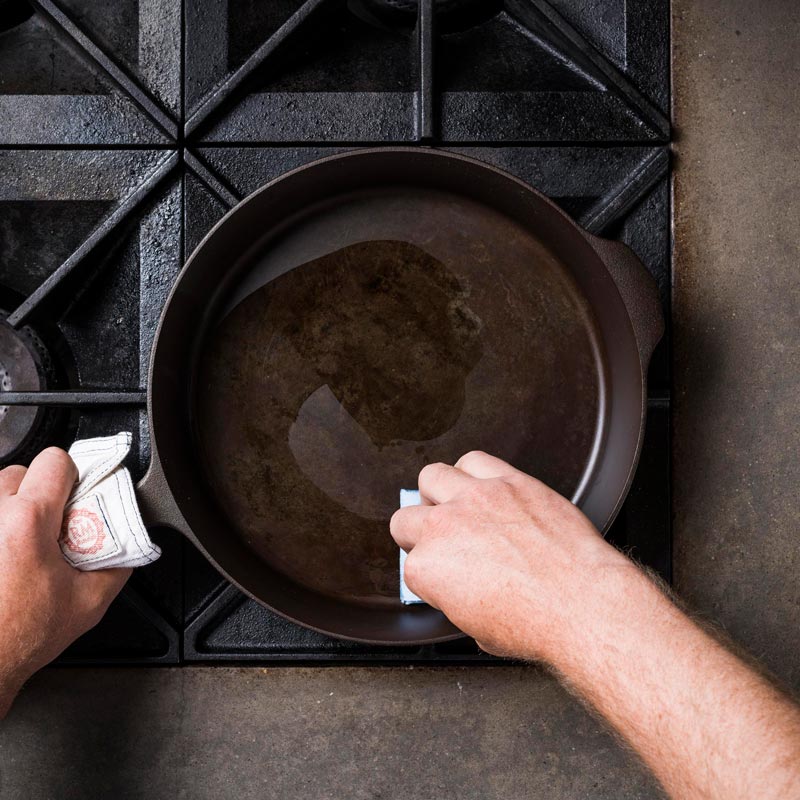French toast should be fluffy, custardy, and crisp around the edges—anything else is just toast. Our recipe checks all the boxes, with generous slices of challah, a lightly spiced and maple-sweetened custard, and a crispy exterior thanks to the excellent heat distribution of a No.9 Round Griddle.

Field Notes:
Challah is the ideal bread for this (or any) French toast. If you can’t find challah, grab a loaf of brioche or pain de mie.
There’s plenty of room to play around with the custard. Swap (or add) in vanilla or almond extract for the maple syrup, mix and match your favorite baking spices, or use a nut or oat milk in place of the whole milk.
More ways to dress up your French toast: sprinkle some turbinado over the cooked toast, top with whipped cream or preserves, or drizzle some hazelnut-chocolate sauce or dulce de leche over.
Recipe: Griddled Challah French Toast
Ingredients
8 large eggs
1½ cups whole milk or half-and-half
2 tablespoons maple syrup, plus more for serving
½ teaspoon kosher salt
½ teaspoon ground cinnamon
½ teaspoon ground cardamom
Pinch of freshly grated nutmeg
One 1-pound challah loaf, cut into 1-inch slices
Melted butter, for cooking the French toast
Maple syrup, for serving
Tools
Resources
The Field Method for Cast Iron Care
Instructions
If possible, slice the challah the night before and let dry on a wire rack. Otherwise, dry the challah in a 300°F oven for about 15 minutes, then let cool while you prepare the egg mixture.
Preheat the oven to 250°F. In a large bowl, whisk together the eggs, milk, maple syrup, salt, cinnamon, cardamom, and nutmeg. Pour the custard into a 9-by-13-inch baking dish and add the bread in a single layer. Let soak for a few minutes, then turn the bread over and let soak for a few minutes longer.
Heat a No.9 Field Griddle over medium heat. Add a tablespoon of butter and enough slices of soaked bread to fill the griddle. Cook until browned on the bottom, 3 to 4 minutes, then flip the bread over and continue cooking until the bottom is browned, 3 to 4 minutes longer. Transfer to a baking sheet and keep warm in the oven while you cook the remaining bread, adding a tablespoon of butter with each batch.
When all of the French toast is cooked, dust the top with powdered sugar and serve right away with maple syrup.
Seasoning Rating: Safe
Butter the griddle before browning your French toast, and you're good to go! Unless you're cooking for a large crowd, this will likely be a quick session that won't do much to add to your seasoning, but should be gentle on the griddle overall. (Add syrup on the plate, not on the stovetop!)
After breakfast, clean your griddle promptly and make sure to apply a dab of Field Seasoning Oil before you put the pan away.
Seasoning Ratings:
Best—These dishes are the best options for building resilient seasoning, and surefire choices for getting tricky pans back on track.
Better—The best way to keep your skillet in great shape is to cook frequently, and cast iron-friendly dishes like these are your bread and butter.
Safe—These recipes won't strip seasoning away from your pan, but won't really add any, either.
OK—Be sure to clean up promptly. Recipes with this rating might feature acidic ingredients which can affect seasoning if not washed soon after cooking.




